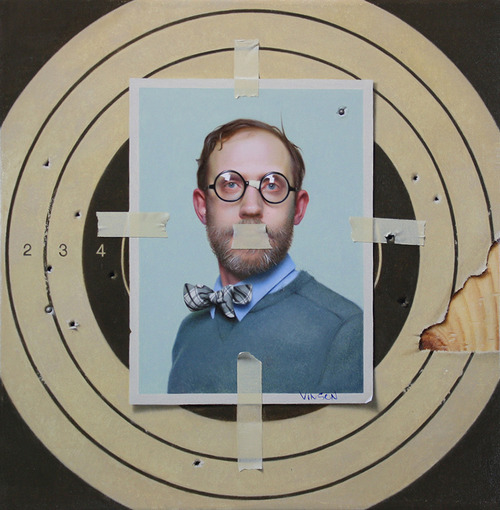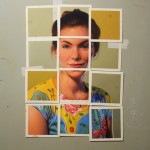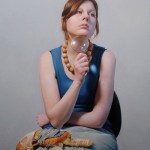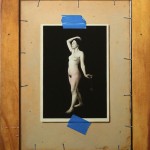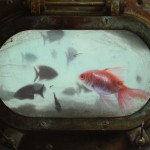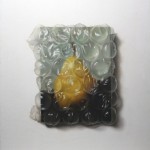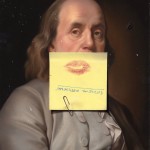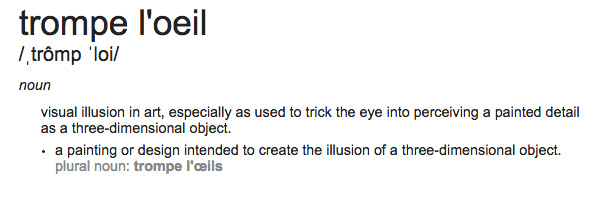An Interview With Painter Genius Adam Vinson
I’ve been hounding artists, directors, scientists, and the like for interviews over the course of the last few months. Occasionally I will get a really great conversation with an individual that gives insight to their methods and techniques at their craft. Some will also, as a bonus parting gift, give something of an opaque view into not just their craft but also their life. But when I knocked on Adam Vinson’s door for an interview I didn’t realize I was not only going to learn about his art, and his life, but that I was also going to learn about Life, The Universe, and Everything, by the end of the conversation. And by “end” I mean that in the loosest of possible terms because Adam and I are still going at it. (Maybe he’s too kind, and he doesn’t know how to shake someone like me? Hahah.) But Adam is such an insightful human being and he has just phenomenal insights to many different aspects of life – oh, and did I mention he’s also a phenomenal artist too? Right. That too.
I stole this bio directly from one of the museums that represent Adam. (Just the beginning of a much larger stalking campaign I have engaged to get a better grasp of this fellow.)
Born in Wilkes-Barre, Pa in 1978, Adam Vinson began his artistic training studying commercial illustration at the Luzerne County Community College and continued his studies thereafter under the tutelage of Anthony Waichulis. Upon finishing the Waichulis Studio curriculum, he enrolled in the historically prestigious Pennsylvania Academy of the Fine Arts.
Using the styles of trompe l’oeil and contemporary realism, Vinson reflects a balance of contemplation, humor and irony in his work. He believes that, for him, representational painting is the best direct route to forming both a visceral and cerebral connection with the viewer.
He maintains a rigorous exhibition schedule in venues around the country and has been featured in numerous publications including American Art Collector, American Artist, Southwest Art, Stroke of Genius and American Arts Quarterly. In 2009, Vinson was the recipient of the third place award in the Smithsonian National Portrait Gallery’s Outwin Boochever Portrait Competition.
If you have no idea what trompe l’oeil is – here is a real quick breakdown:
So with those few details out of the way – I’m ready to dive into the interview, which has been a really awesome personal high for me on this little blog journey of mine. But before I do, I will say that I do have many favorite paintings of Vinson’s, (not that you are curious or anything) but I am fairly partial to his piece entitled ‘Prepackaged’ which is so meta it might actually come back around again to smack you in the back of the head. You can see it above in the gallery, its the photo of the pear in bubblewrap. But that is just from a conceptualization standpoint – every single one of his paintings will blow your mind with its detail and charisma. From the perspective of just raw desire to own said painting, I would have to say it would be his ‘Abstract Expressionism’… which is the painting of the polaroids forming a portrait. I salivate every time I see it. Is a Pavlovian response normal when it comes to art? Anyway, I think I have digressed enough, I say we kick off the interivew.
An Interview With Painter Genius Adam Vinson
Taylor – I have to start with a question about what kind of an artist you see yourself as? Most of your work seems to be hyperrealistic, still life, and some portraiture work? And yet, when people talk about your stuff I hear a lot of adjectives that aren’t normally thrown in except in the case of someone like maybe Banksy… like the word “Ironic”. Do you feel that your work is ironic? What does irony even mean to you if so?
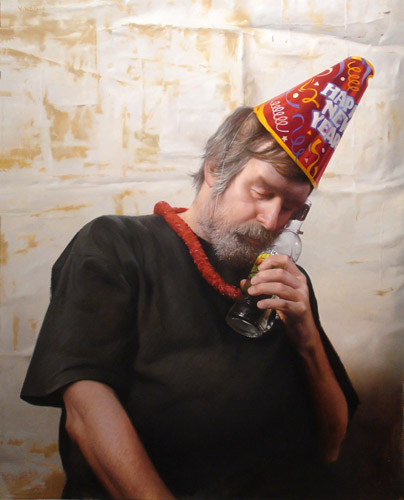
Adam – I feel like I’ve always struggled to define myself as a painter. I suppose I’m more recognized as a trompe l’oeil painter than anything, but I have a tendency to want to evade labels. In addition to, and most times in congruence with trompe l’oeil, I dabble in still life, human likeness, and rarely, the metaphysical.
It seems we need to compartmentalize, label, brand and define everything in order to make sense of the world. Movements, genres, periods are all broken down into sub-movements, and so on, categorized by time, place, imagery, materials used and people involved. My work has been called photorealistic and hyperrealistic but I’ve never felt comfortable with those terms. I’ve always just been drawn to representational art in whatever form. I just want to create it, not tell people how to perceive it.
I think some of my work has a sense of irony, either intentionally or unintentionally. To be honest, I think the paintings in which I did not intend irony are the most successful at conveying it. Such as my painting The Resolution in which we see a man nodding off with a bottle in his hand while wearing a plastic lei and a Happy New Year party hat. That started off as a fun, lighthearted painting, but once you associate it with its title, it can take on a more serious tone. Is that irony?
Taylor – I wouldn’t normally have asked as to your particular type of art except that it is so blooming different. You do paint as a trompe l’oeil artist, but you also are an amazing portrait painter, as well as hyperrealist. I recently had a nice conversation with Kendra Haste – and she makes amazing sculptures of animals out of chicken wire. Its her thing. I also recently spoke with Seth Clark, and his thing is painting destroyed structures. Houses, buildings, collapsing structures. Both of these artists have a clear “thing”. So I guess I was more interested in what you identified with and what you resounded with, and it sounds like you answered it with what you are recognized as.
I agree with you that classification is fairly arbitrary and yet simultaneously important merely from a marketing perspective. As an artist I’m sure you prefer to not to be classified, but do you not see benefits simply from a sales and marketing perspective? Seems like a problem authors and other artists have as well as I think through my own question.
Adam – I guess I’m still searching for my “thing”. I mean, I have a thing for which some collectors and art aficionados know me but I guess I’m just always searching for the “thing” for myself. I paint what I know, both in technique and in subject but I feel like it’s a slow slog to try to find that holy grail of what it is I am outside of myself. Does that make sense? I see so many artists just kicking it hard right out of the gate and they’re full-force on board with something fresh and original. I suppose I just feel kind of average. I know that sounds queer, but it’s appropriate for how I feel about my work.
I suppose the demon word here is “comparison”. I’ve spent my life comparing one’s art to another’s. Or one song to 10 other’s. I’m caught in a trap of wanting to classify and compare art and everything else, for that matter. And for myself, maybe that is an insufficient way of doing things. I do see the benefit of being pigeonholed into a certain genre that a collector would expect. It has brought me great opportunities and I’ve met both admirers and collectors whom I’ve come to know and respect, however It’s a matter of predictability for me personally and I would assume that predictability in the mind of any artist is similar to kitsch. But that’s a whole other topic.
Taylor – Your work reminds me of Jeremy Geddes’ art in an oblique sort of a way. Hyperrealistic. Both yours and his art invoke interesting stories and curious questions. You are both extremely talented. Is there a favorite artist that you look up to today? Historical artist?
Adam – That’s definitely oblique! I think Geddes’ work is a good example of what is exciting about contemporary representational art. It’s fresh, mysterious, masterfully executed and it tickles the eyes.
I have very strong feelings about the living hero status of artists. I think there are some artists whose art-stardom is a bit inflated and then many very talented artists who fly under the radar. It’s the latter who deserve more attention.
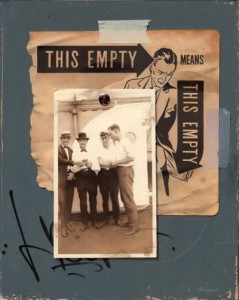
Taylor – I agree, it was an oblique connection – but the unifying theme would be you are both hyperrealists that bring interesting stories to your paintings. Things that make me wonder what is going on here? Like your piece, “Social Commentary”, that totally makes me wonder what the impetus was – not of your creation, of the story that would bring about this to occur in this fictional world. Is it you? Are you being silenced? Is it someone else? Why a bb gun? Right? I mean, its loaded with immediate questions for context and larger perspective. Another painting that makes me question the story of would be “Card Sharks”.
I couldn’t agree more about your comments about hero artists and the disproportionate praise we give some and the dearth of praise we give to others. If you ran the Equality For All Artists Committee, who would you nominate first?
Adam – Yeah, there you go with the “hyperrealist”. Is Geddes work Hyperrealist? Who makes these designations? Is my work? Maybe to some? I don’t know. But really, what does it matter? It’s all someone’s work no matter who labels it. I think most visual artists have a hard time being typecast. I clearly do.
In reference to “Social Commentary”, this painting was in response to a trend at the time of both newsworthy bullying and pedestrian shooter incidents. The painting is a photo of me made to look like a stereotypical nerd: thick glasses with tape, bow tie, and cowlick. My “picture” (perhaps a class photo) is taped to a BB gun target with evidence of it having been shot at and a BB lodged into the “photo” itself.
I leave a lot of this vague even for myself. I like the ambiguity it can convey and, in turn, the interpretation. You can question why the BB gun and not an automatic rifle, but do you need to?
Taylor – What is a normal day in the life of being Adam Vinson like?
Adam – I wouldn’t recommend it.
Taylor – Seriously!? Sorry, but… this last year I flew around the world and visited some of the poorest places on the planet. Lima, Peru. Addis, Ethiopia. Manila, Philippines. Etc. Etc. If you’d like to see lives and lifestyles I wouldn’t recommend I could tell you about a few.
What do you not recommend about it? The painting? The business side of it? Your life? I’m curious. From my own perspective, I’ve thought about starting up a web design firm occasionally, and the thing that keeps me from doing it is the tension between doing amazing work, and eating. Is that where the difficulties lie? Or am I projecting way too much? Could you elaborate even a little bit?
Adam – Actually, you’ve made me think about this addendum question. It was not intended to compare my daily life to those living some poverty-stricken, eat-your-own-feces-type life. Perhaps I was uninterested in elaborating on my own daily timeline. After all, isn’t that a little private?
But since you asked I will tell you what my typical daily life consists of the following, in no particular order:
Coffee
Meditation
Run (preferably on trails. You know, to connect with nature)
Paint
Social media
Primp and caress my feline beasts
Cook for my wife (we’re vegetarians)
Watch some tele or read
Philosophize with wife
Retire
Taylor – Do you have any sort of vision for what success looks like for you in your art career? Not that you haven’t already succeeded. I’m just curious what your own drive for your career looks like. Is there a place that you’d like to show? A competition to win? Anything stand out?
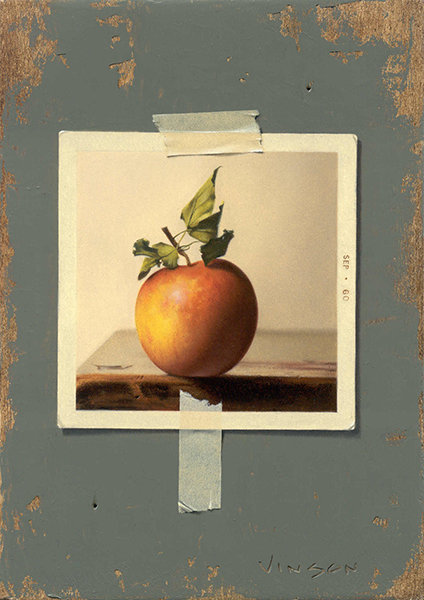
Adam – My latest thoughts on success have been leading me to an opinion that success is just a construct. When we define success in our lives, we are determining a linear pathway of goals to achieve toward a perceived end, as if success is just a thing that awaits us at the end of a giant stairway, after much drudgery.
What is success? And once we achieve our illusion of success, are we then to wither like a dying flower and accept the inevitable decline after the summit has been reached? Sure, we inevitably experience hits and misses that either give us momentum to keep going or make us question our purpose and relevance, but maybe for me the success is just in the doing. The ability to keep going. Any opportunities that come along are just icing on the cake.
Taylor – Not to venture too far afield, but it sounds like you are wandering out into the land of philosophy with this particular answer. Or maybe that of spirituality. Do you have any sort of spiritual background?
In an another interview you did – I’ve since lost it or I’d refer to it like a real interviewer, which I am decidedly not – you talked about the tension of desiring to sell an increasing number of paintings juxtaposed with the desire to do something new and more amazing than anything you’ve ever done before. Where are you now on that continuum? 10 new paintings or 1 mind blowing painting unlike anything you’ve ever done before?
Adam – Please don’t dismiss yourself as a real interviewer. That may only be insulting to the interviewee. You’ve so far been maybe the most thorough interviewer by which I’ve had the privilege to be interviewed.
I suppose I was floundering into philosophy. Whether you compare that to any similar question in a previous interview or not, it’s pretty much moot because our ideas of success need to be fluid. If they’re not, they’re dead. I may wish for more money, more exposure, more of my name in glowing lights, but what I really want is something I can’t yet find and maybe will never find. And that’s the magic, the insanity and the callousness of art.
Since that interview I have done a “mind-blowing” painting in the sense that my mind was blown for some time afterward. But there it is. It hangs somewhere. I have forgotten about it after having spent so much intimate time with it. So if I start to wax philosophical about this enterprise it’s because it’s always changing. The victory of today will be the memory of tomorrow.
Taylor – From idea to conclusion, about how long does it take for you to complete a painting on average? I would think that you must pour hundreds of hours into each piece of work you do. For example your keys painting maybe? Its hard viewing images online, because the detail just isn’t there, but paperbag magazine posted an enormous scan of your Aquarium painting, and the detail is just phenomenal. The verdegris and the detail on the copper is beyond beyond.
Adam – There’s no real rhyme or reason to how long a work can take when we introduce conception into the equation. I have a painting I’ve been kicking around for four years now, and yet I have paintings I’ve cranked out in mere days. If I knew that answer perhaps I wouldn’t toil as much. The keys painting you mentioned, Skeleton Crew, was just a perfect storm. I came upon this massive collection of skeleton keys and just knew I wanted to paint them. I had been asked to do a painting for a 10” x 10” exhibit at Sloane Merrill Gallery in Boston and this key ring just happened to work perfectly into a 10” x 10” format. I had limited time to paint it and so the deadline motivated me to work long hours in a shorter amount of time than I usually would have spent on a painting this complex. I think I finished this painting in two weeks. As for the Aquarium painting, thank you for using the word verdigris.
Taylor – You are more than welcome for the verdigris. Can I just say that your backgrounds are amazing in and of themselves. So much detail dripping from each one. The masking tape, pinholes, safety pins, all the textures are worth the paintings by themselves in my opinion. So rich. How do you decide what your background textures will look like? Do you build them all as still lifes? Do you make them up as you go?
Adam – Thank you. I really appreciate you saying that because most of my “backgounds” are conceptions. It’s my way of taking a break from the regimen of tight painting. Many of those backgrounds are applied with palette knife, scraped and reapplied. Usually a few layers deep. I work off instinct and my mind rather than what is in front of me.
Thanks Adam for a truly enlightening interview. This has definitely been a conversation for the books…

